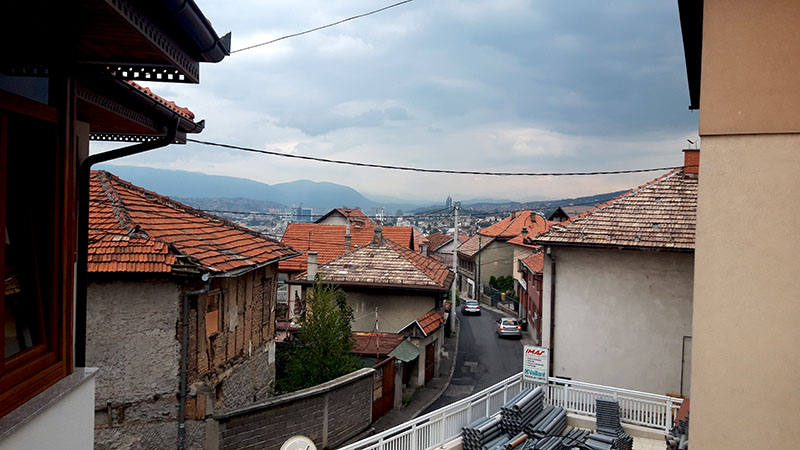When I knew I will leave Skopje to live in Sarajevo for the next three years, I was happy and sad, and a little superstitious. Superstitious, because I first moved from my hometown Beirut to Barcelona, then from Madrid to Malabo and now from Skopje to Sarajevo, what will the next two cities be? following this alphabetical rhythmic, what will the next city’s starting letter be?
It also saddened me to leave the city of Skopje, that was becoming the companion of my everyday life, but happy to meet Sarajevo, and stay in the Balkans; that is being a very inspiring geographical context for my travelogues.
With the pandemic situation complicating traveling measures, we decided, my family and I, to do a road trip from Skopje to Sarajevo. The memory of this trip is a mix of a fleeting landscape, like colourful stains forming and dissolving on the car window, a break along the way for a quick car picnic in a highway station, and an unforgettable stay in the Mokra Gora village. This village is on the frontier of Serbia with Bosnia Herzegovina, and we spent the night in one of its local attractions, the old railway station. A motel was constructed near the railway, some train wagons were lying there, a reminiscence of another epoch. Today, in summer and winter, this train takes some 300 passengers on an eight shaped ride, along the mountain areas down the canyon of river Kamesina, in the valley of mountain Mokra Gora. To reach the motel in the Sargan Eight complex, we passed nearby the village called Kustendörf constructed by Emir Kusturica, for the movie Life is a miracle; this idyllic landscape is a perfect stage. In the surroundings of the motel, the houses are to be rented for vacation holidays. You had the impression of living in a village and in august it was full. Inflatable swimming pools were scattered in the small gardens in between the houses, children running in bathing suits among chickens and mothers calling to have dinner. The lightness of summer was all over the place, with the Mokra Gora mountains in the backstage softened by the tender light of the ending day. The next day, after leaving our mountain refuge, we entered Bosnia Herzegovina, crossing the town of Višegrad. When we first the bridge on the Drina, conceived by the great Turkish architect Sinan in 1577, time paused for some seconds. It was an epic moment when you are encountering a piece of narrative fiction under the actual sunlight and above shimmering water running under its arcades. It doesn’t happen often. We continued, and the landscape was a succession of green fields, folding and unfolding with slow meandering movements over a hilly topography. I remember a lot of tunnels crossing, because of the mountainous geography of the country, we were finally entering Sarajevo. At last, we were in front of our house in Vratnik, one of the oldest neighbourhoods in Sarajevo. This was the end of our road trip. We looked at the surroundings from our house balcony; we were on a hill of crowded houses, perching on top of each other’s and punctuated by some minarets here and there. On the near horizon line some tall buildings were peeking at us, the city centre sitting on the narrow strip of flat land, on both sides of the Miljacka river and surrounded by hilly neighbourhoods was welcoming us. We couldn’t wait to leave our luggage and take a walk.



